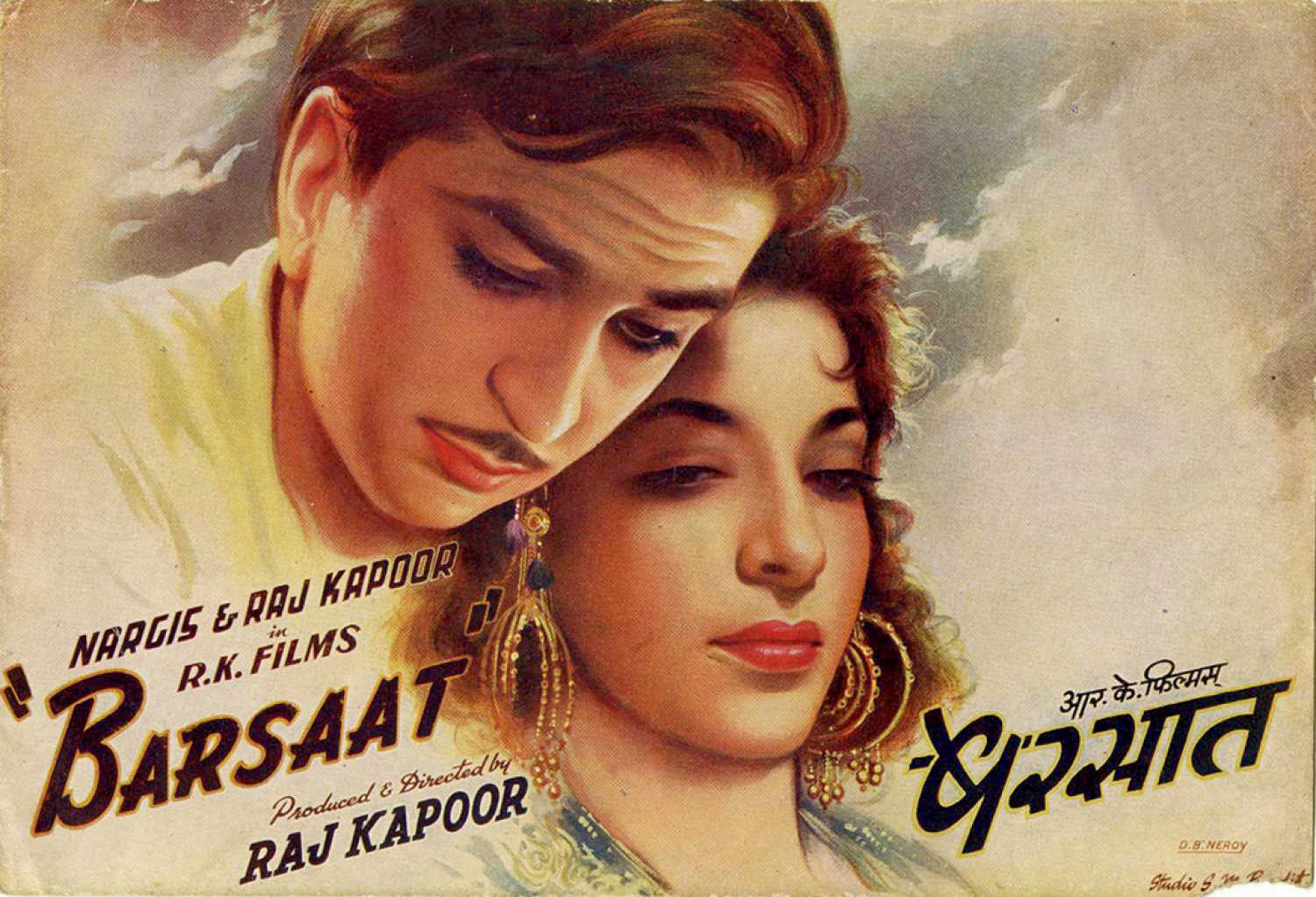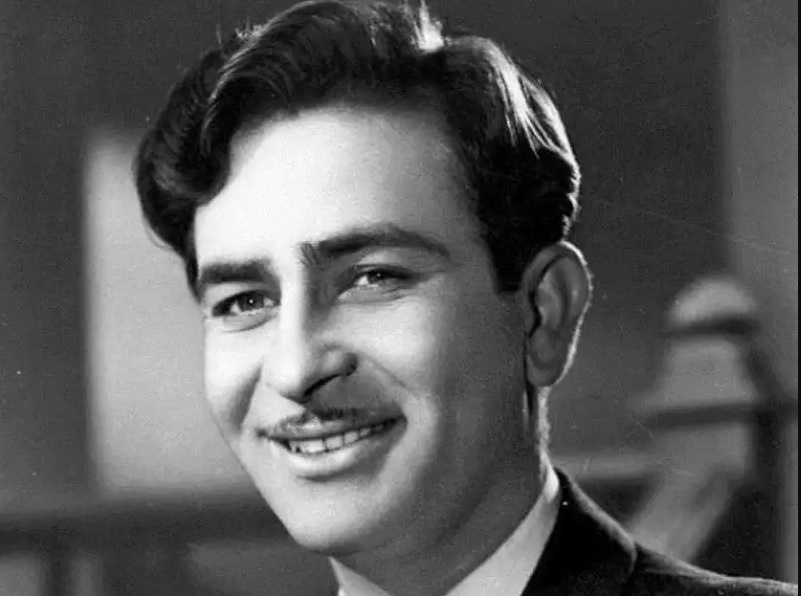It’s a general assumption that true artists are socially elusive. It’s a notion that they ought to not achieve star status. It compels them to be ‘intelligent and inventive’ in their work. This makes them conscious. However, there are only a few artists who achieved popularity very early in their careers and have become a cultural icon but managed to stay their artistic vision intact and showed consistency. one among them is Raj Kapoor, and for that fact, he’s also one among the rare breeds of artists who could maintain a balance between the roles he had to modify as an actor, director, writer, and producer.
Being the son of the legendary doyen of Indian Cinema, Prithviraj Kapoor, Raj Kapoor was a toddler prodigy. He made his introduction in an Indian movie at the age of 10 with 1935 film Inquilab. Kapoor then appeared in Neel Kamal in 1947, opposite to the immortal diva of Indian Cinema, Madhubala. He founded RK Studios in 1949 and has become the youngest filmmaker of his era.
The study of Raj Kapoor’s filmography is extremely important not because he made films that reaped accolades or they were entertaining inasmuch as they were intense. it’s his artistic vision, use of allegories, and implementation of melodrama to depict the truth of post-independence India is what makes his filmography a topic in cinema. As an actor, he also emulated the tramp character of Chaplin, which Indian Audiences loved.
It’s always difficult to form a choice between Raj Kapoor as an actor or as a director. it’ll preferably be interesting to peek into films during which he acted or directed or played both the roles.
Here’s the list of 10 such gems –
1. Aag [1948] –

Aag
Aag is Raj Kapoor’s directorial debut. it’s a coming-of-the-age drama which also stars his youngest brother Shashi Kapoor as a toddler artist. The film weaves the story of a man named Kewal, who wants to pursue his passion for theatre and drama. His authoritarian father doesn’t allow him to try to so. He succumbs to his father’s decision of pursuing law as a career only to resort back to his passion again.
The film addresses the family pressures youngsters still undergo despite which passion always supersedes all other pursuits. However, it’s not the sole motive of the film. It also deals with the intricacies of affection and draws a conspicuous chasm between infatuation and love. Raj Kapoor does it by making the protagonist lit his own face to save lots of his friendship. during a much comprehensive way, Aag seems to be a man’s journey of ethical discovery and depiction of true love and friendship. albeit the film wasn’t successful at the box office but Raj Kapoor’s filmmaking style and his affinity towards melodrama were quite evidential.
2. Barsaat [1949] –

Barsaat
By the time Barsaat had hit the box office, Raj Kapoor had become an honest actor for his roles in Kidar Sharma’s Neel Kamal, his own film Aag and Mehboob Khan’s modern melodrama Andaz. However, it’s Barsaat with which Raj Kapoor rose to prominence as a filmmaker. This film tells the story of two men of various molds and beliefs. one among them believes in true love, while the opposite one may be a libertine.
The whole contextual setup of Barsaat looks romantic. However, there are tons to dig in if we glance at the film from a political perspective. The film recognizes the states which were resisted for assimilation by respective princes. Raj Kapoor uses allegory within the most subtle way by showing the ethnically attired girl wearing a Sari (the national dress) when she unites with the hero, drawing the parallel with the assimilation of Kashmir within the fashionable nation. The film had melodious songs and it also marked Raj Kapoor’s association with the conductor duo Shankar-Jaikishen for the primary time.
3. Awaara [1951] –

Awaara
Awaara is the best film in Raj Kapoor’s oeuvre as a director. The film tells the story of a man named Raj. His father rejects him because he doubts that he’s the son of a nefarious dacoit. The son goes on to become a thief under the tutelage of that dacoit. Later within the film, Raj falls crazy with Rita, who is his father’s ward. Superficially, the film seems like a characteristic Bollywood romance of ostentation. However, Awaara covers the post-independence India, poverty-related to it, and therefore the susceptibility of poor youngsters towards crime during that era. the simplest part about Awaara is its ambiguity about what the story actually wants to realize. within the film, the judge believes in genealogy – an individual whose father may be a dacoit will become a dacoit.
The film, on the entire, doesn’t defy the notion and shows Raj an honest person despite being a thief because he actually may be a judge’s son. The film also depicts tons of evidence of what theorists called oedipal conflict once we see Raj’s inexplicable affection towards mother and hatred towards the daddy. The mothers in Indian cinema often represent the land and therefore the father state authority. If that’s the case here, then the protagonist becomes the victim of partition and negligence of state authorities, and that’s where the film marks its existence within the period.
4. Aah [1953] –

Aah
The film was directed by Raja Nawathe, but the character played by Raj Kapoor makes this film vital. The film tells the story of a man named Raj who mistakenly falls for ‘the wrong woman’ during the initial period of an arranged proposal of marriage. during this film, Raj Kapoor has played the role of a man named Raj who belongs to an upscale family and maybe a dam constructor engineer. The concept also features a historical perspective, as in those days of the early development of recent India; construction of dams across the country was a top priority.
This character depicts progressive India, India’s social station, and therefore the nation’s aspirations to become a developed country after British Raj. The character also has an indoor conflict of ambition to become a poet instead of an engineer but succumbs to his father’s choices, which is usually an undercurrent theme in Raj Kapoor films. However, the film had a contrived storyline and defied ‘the sacrificial grandeur’, but remains referred to as one among the simplest performances by Raj Kapoor.
5. Shree 420 [1955] –

Shree 420
Raj Kapoor had emulated some a part of the mannerisms of Charlie Chaplin’s tramp character in his previous film Awaara, but it’s in Shree 420 that the act got its due appreciation. during this film, Raj Kapoor plays a rustic guy named Ranbir who migrates to Mumbai in search of labor. He falls crazy with a woman named Vidya. Later on, he feels the temptations of the riches of an unethical lifestyle when a person pursues him to play cards to earn a living.
While his contemporary Guru Dutt wont to capture the gambling culture in Mumbai because the main story and portrays it as something immediate in Dev Anand’s Baazi, Raj Kapoor uses the narrative as a caricature of the atrocities happening in post-independence India, and he further aligns the narrative towards the false hope and misgivings of the newly independent nation. The film sounds playful for many of the parts because it is intertwined with tons of Raj Kapoor style humor, but it’s much serious about its storytelling. The film is mournful and a perfectly crafted story of affection and temptation.
6. Jagte Raho [1956] –

Jagte Raho
Jagte Raho is far like other Raj Kapoor’s movies – progressive in nature and incisive about the historical context of the state, but the helmsmen during this were Sombhu Mitra and Amit Maitra. during this film, Raj Kapoor plays the role of a peasant who involves town from his village to seek out employment. Cops think that he’s a thief the instant they spot him trying to drink water from a hand-pump. the remainder of the story is from the purpose of view of the protagonist. He hides in an apartment where we get to ascertain the shady lives of seemingly normal people.
The underbelly of the apartment comprises everything right from thievery, deception, brutality, bullying, and other amoral acts. The film is an allegory of the hidden and dark side of the town which commits all kinds of crime within the darkness. However, the treatment of the film is more sort of a Freudian dream. Raj Kapoor delivers a terrific performance because the peasant and therefore the film went on to win Crystal Globe at Karlovy Vary International Festival.
7. Chori Chori [1956] –

Chori Chori
The film is an adaptation of Frank Capra’s ‘It Happened One Night’ and is directed by Anant Thakur. this is often a rare movie during which Raj Kapoor stars but isn’t the middle point of the film. The film depicts the story of a woman named Kammo who happens to satisfy a reporter during a bus journey, and therefore the journey changes her life. albeit the story favors Nargis’ Kammo because the protagonist, but it’s Raj Kapoor’s excellent comic timing that takes the cake. He plays the snappy and sarcastic reporter effortlessly. the instant when the character falls crazy with Kammo and shrugs it off in ignorance is beautifully enacted by Raj Kapoor. His internal conflict and bewilderedness are palpable within the act. this is often one among those films that depicted the inaccessible romance and chemistry between Raj Kapoor and Nargis.
8. Sangam [1964] –

Sangam
The film may be a love triangle between three characters namely Sunder (played by Raj Kapoor), Radha (Vaijantimala), and Gopal (Rajendra Kumar). The film is backed by wonderful foreign locations and great music. In other love triangles, we see a man marrying the girl on the grounds of being wealthy, but the girl still loves the poor guy. In Sangam, we see that the girl actually marries the less wealthy guy but secretly despises his rude ways. albeit the film was treated sort of a romance, but Raj Kapoor being the visionary had much to mention. He touched upon issues regarding education in India, need of science education, life skills education, and more importantly portrayed SOPs of the defense establishment and regulation and licensing. Raj Kapoor does these so subtly that it becomes difficult to require these as lessons. They become just parts of the narrative structure.
9. Mera Naam Joker [1970] –

Mera Naam Joker
Mera Naam Joker is Raj Kapoor’s work of art which took 6 years to finish and was a box-office disaster. The film tells the story of Raju who happens to be the simplest circus clown ever. It covers his life events from childhood to his last show. The events in Raju’s life are more like episodic memoirs. within the film, the character of Raju goes through a myriad of upheavals. However, it’s not only his biography that the film wants to depict.
The film is more sort of a moral discovery, about the pursuit of happiness even within the most pensive stage of life. More importantly, it artistically elucidates the concept of selfless love. Raju always carries a joker doll with him. He gives it away when he goes through heartbreak. However, the doll somehow returns to him. Raj Kapoor ingeniously uses the doll as a metaphor of his heart which is filled with love. Mera Naam Joker was Raj Kapoor’s artistic triumph. it’s now heralded together of the simplest films ever made in Indian Cinema.

Jeena Yahaan Marna Yahaan… The Immortal Raj Kapoor!
Over the course of his career, Kapoor collaborated with some great artists just like the conductor duo Shankar Jaikishan (who composed numerous melodies for him), Nargis (with whom his chemistry remains unparalleled in Indian Cinema) and Mukesh (who became his voice).
Kapoor was someone who knew the Indian audience quite anyone else. albeit his films didn’t reek of any quite formula and he touched upon different aspects of society; critics and a few a part of the audience feel that his films had sexist content. Also, the characters he played were a narcissist. this is often because his characters are always loved quite they love. However, his films give an account of hopes and misgivings of post-independence India, and he displayed the scenario covertly. Moreover, all the films in his oeuvre are filled with entertainment and price watching – a top quality that he’s referred to as The Showman of Indian Cinema. It’s a title that only Subhash Ghai could earn after Raj Kapoor.
The Government of India awarded him with Padmabhushan in 1971 and therefore the Dadasaheb Phalke Award in 1987.





